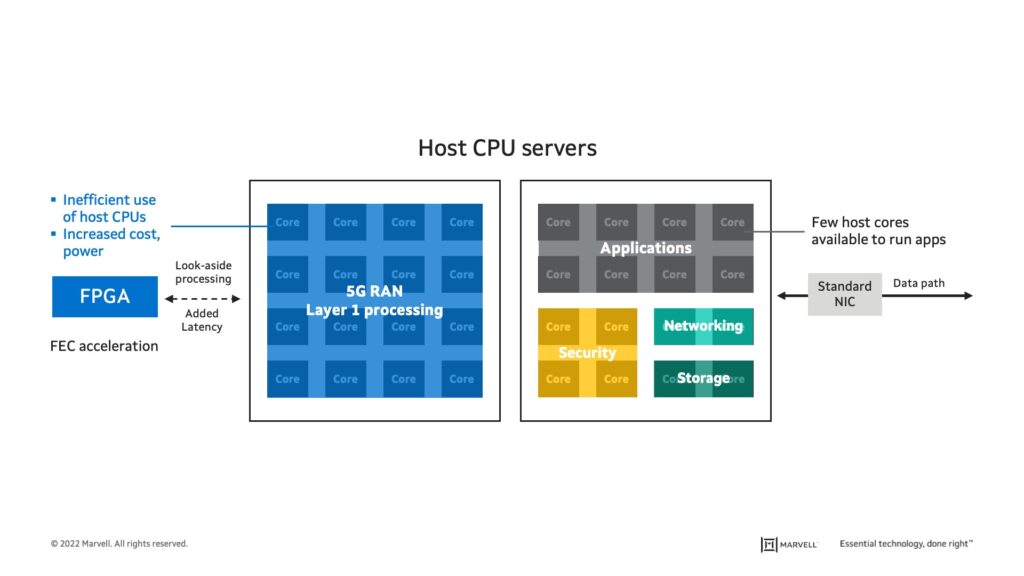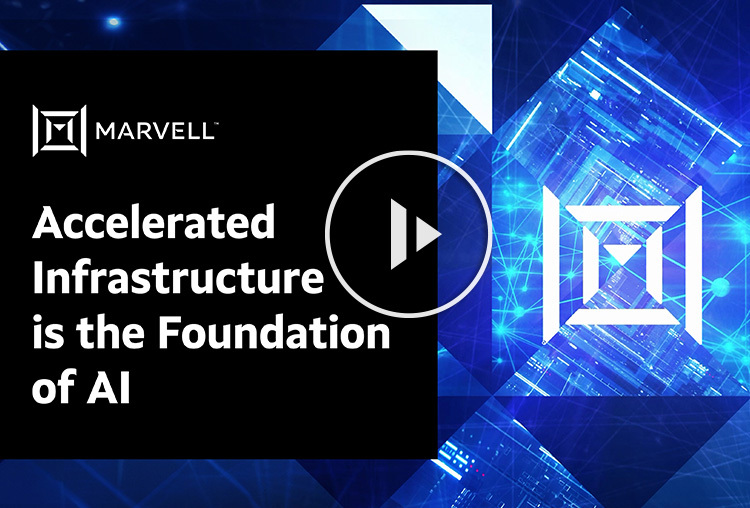

By Peter Carson, Senior Director Solutions Marketing, Marvell
Marvell’s 5G Open RAN architecture leverages its OCTEON Fusion processor and underscores collaborations with Arm and Meta to drive adoption of no-compromise 5G Open RAN solutions
The wireless industry’s no-compromise 5G Open RAN platform will be on display at Mobile World Congress 2022. The Marvell-designed solution builds on its extensive compute collaboration with Arm and raises expectations about Open RAN capabilities for ecosystem initiatives like the Meta Connectivity Evenstar program, which is aimed at expanding the global adoption of Open RAN. Last year at MWC, Marvell announced it had joined the Evenstar program [read more]. This year, Marvell’s new 5G Open RAN Accelerator will be on display at the Arm booth at MWC 2022. The OCTEON Fusion processor, which integrates 5G in-line acceleration and Arm Neoverse CPUs, is the foundation for Marvell’s Open RAN DU reference design.
5G is going mainstream with the rapid rollout of next generation networks by every major operator worldwide. The ability of 5G to reliably provide high bandwidth and extremely low latency connectivity is powering applications like metaverse, autonomous driving, industrial IoT, private networks, and many more. 5G is a massive undertaking that is set to transform entire industries and serve the world’s diverse connectivity needs for years to come. But the wireless networks at the center of this revolution are, themselves, undergoing a major transformation – not just in feeds and speeds, but in architecture. More specifically, significant portions of the 5G radio access network (RAN) are moving into the cloud.
By Peter Carson, Senior Director Solutions Marketing, Marvell
5G networks are evolving to a cloud-native architecture with Open RAN at the center. This explainer series is aimed at de-mystifying the challenges and complexity in scaling these emerging open and virtualized radio access networks. Let’s start with the compute architecture.
Open RAN systems based on legacy compute architectures utilize an excessively high number of CPU cores and energy to support 5G Layer 1 (L1) and other data-centric processing, like security, networking and storage virtualization. As illustrated in the diagram below, this leaves very few host compute resources available for the tasks the server was originally designed to support. These systems typically offload a small subset of 5G L1 functions, such as forward error correction (FEC), from the host to an external FPGA-based accelerator but execute the processing offline. This kind of look-aside (offline) processing of time-critical L1 functions outside the data path adds latency that degrades system performance.
Image: Limitations of Open RAN systems based on general purpose processors
マーベル、PR チーム
At the most recent FierceWireless 5G Blitz Week, some of the world’s leading 5G innovators met via webinar to discuss the potential of O-RAN and challenges of the ongoing 5G rollout. In a keynote, EVP and General Manager of Marvell’s Processors Business Group Raj Singh explored the accelerating shift to O-RAN, which is an emerging open-source architecture for Radio Access Networks that enables customers to create better 5G applications by mixing and matching RAN technology from different vendors.
O-RAN architectures are compelling because they increase competition among vendors, reduce costs, and offer customers greater flexibility to combine RAN elements according to their application’s specific use cases. However, in addition to their obvious benefits, O-RAN solutions also raise operator concerns including potential challenges with integration, legacy support, interoperability and security – issues that Marvell and other companies in the Open RAN Policy Coalition are addressing through shared standards, proven solutions and innovative approaches.
Copyright © 2025 Marvell, All Rights Reserved
